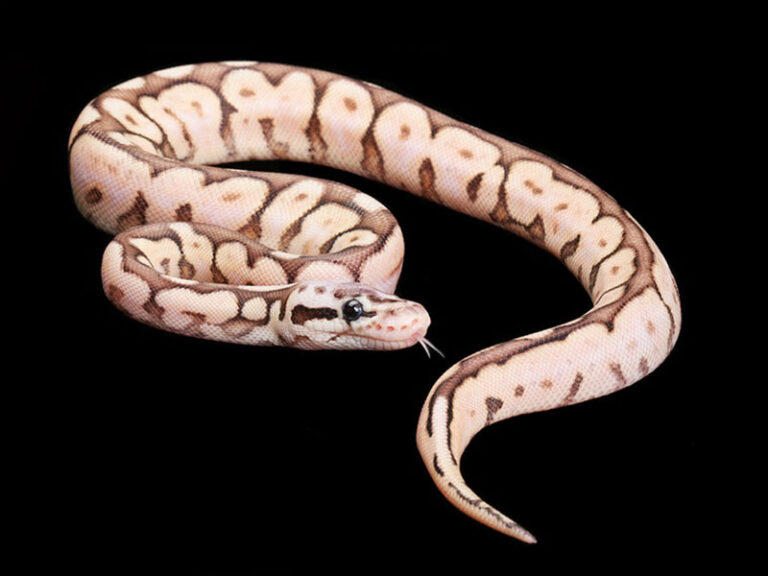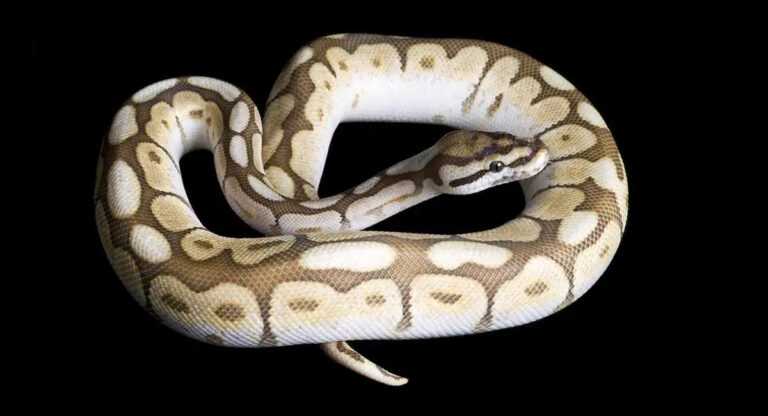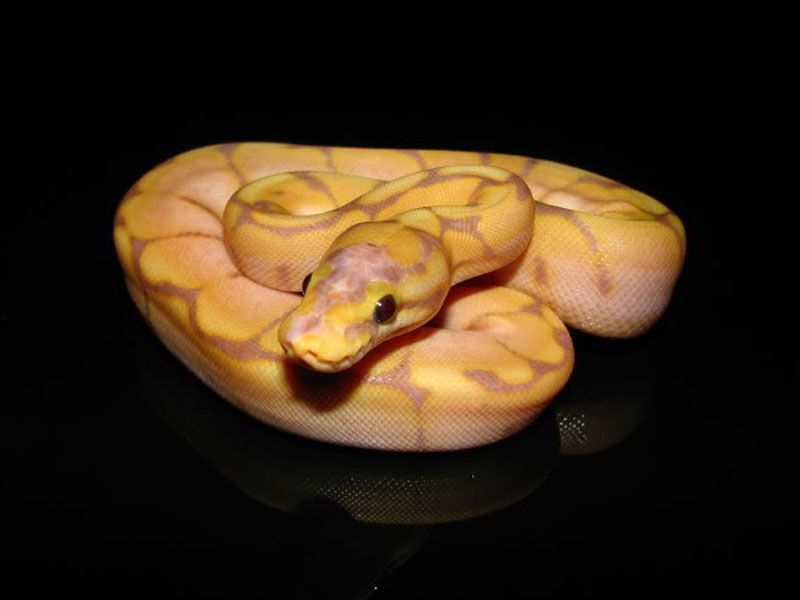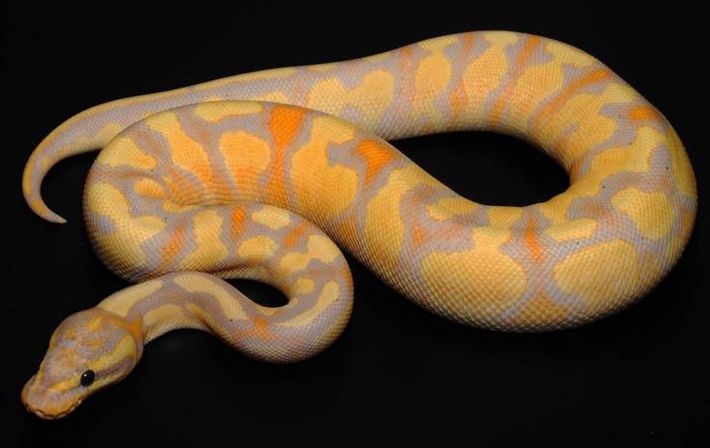Taking care of a ball python is not just a job; it’s an enjoyable and satisfying way to feel closer to nature. I have learned from my experience how to keep my ball python healthy and happy with a simple routine. If you want your ball python to stay healthy, here are a few easy tips from what I’ve learned.
Understanding Your Ball Python's Care Needs
Before setting up the perfect home for your ball python, it’s important to understand the basics of their care. From my experience, I’ve learned that these snakes come from West and Central Africa, where the weather is warm and humid. Knowing about their natural home has helped me create a similar setup for my own ball python.
Essential Ball Python Care Tips
- Diet: From my experience, ball pythons eat mice or rats that are the right size for them. Adult snakes usually need to eat once a week, while younger ones may need food more often.
- Handling: I’ve noticed that ball pythons are calm and friendly, but it’s important to handle them gently. Let them get used to you, and avoid picking them up right after they eat.
- Hydration: In my care routine, I always make sure my ball python has clean water. The water bowl should be big enough for the snake to soak in if it wants to. This helps keep them hydrated and healthy.
Crafting the Perfect Ball Python Habit
Creating a habitat that feels like their natural home is key to caring for a ball python. From my experience, here’s how I set up a comfortable and cozy space for my ball python:
Choosing the Right Enclosure
The enclosure is a key part of keeping your ball python healthy and happy. From my experience, choosing the right size and type of enclosure is very important because it’s where your snake will spend most of its time. There are many options, like glass tanks, plastic enclosures, or even custom-built setups. For my adult ball python, I picked a 40-gallon glass tank. It provides plenty of space for my snake to move around and explore, which I’ve found helps keep it active and content.
Setting the Temperature and Humidity
Ball pythons are ectothermic, meaning they rely on external heat to control their body temperature. From my experience, here’s how I create the ideal environment for my ball python:
- Temperature Gradient: I set up a temperature gradient in the tank with a warm side (88°F-92°F) and a cool side (75°F-80°F). This gives my ball python the freedom to move between areas and adjust its body temperature as needed.
- Heating Tools: To keep the temperature steady, I use an under-tank heater (UTH) paired with a thermostat. This setup ensures the temperature stays consistent and safe, which I’ve found is crucial for my python’s comfort.
- Humidity Levels: Maintaining humidity between 50%-60% is essential for my ball python’s health. I use a hygrometer to check the humidity and mist the tank occasionally. This helps with shedding and keeps my snake in good condition.
Adding Substrate and Decor
The substrate and decor are not just about looks—they play a big role in your ball python’s comfort and health. From my experience, here’s what works best:
- Substrate: I use coconut husk because it holds moisture well and is easy to clean. Other great options I’ve tried include aspen bedding and cypress mulch.
- Hides: Ball pythons love hiding spots, so I provide two hides—one on the warm side and one on the cool side of the tank. This helps my python feel secure and comfortable.
- Climbing Features: While ball pythons aren’t big climbers, I’ve found they enjoy exploring low branches or vines. Adding these features makes the enclosure more enriching and gives my snake something fun to do.
Lighting and Photoperiods
Ball pythons don’t require UVB lighting like some other reptiles, but from my experience, it’s still important to maintain a regular day-night cycle to keep them healthy. I use a timer to ensure they get 12 hours of light and 12 hours of darkness each day. This mimics their natural environment and helps them stay healthy.
Keeping the habitat clean is key to my ball python’s well-being. Here’s how I maintain a clean environment:
- Daily Spot Cleaning: Every day, I make sure to remove any waste or leftover food right away. This simple routine helps keep the habitat clean and prevents the buildup of harmful bacteria.
- Weekly Checks: Once a week, I replace the water and wipe down the tank’s surfaces. This ensures the water stays fresh and the tank remains hygienic.
- Deep Cleaning: About once a month, I give the entire enclosure a deep clean. I use reptile-safe cleaning products to sanitize everything thoroughly. This prevents germs and keeps the habitat safe and healthy for my python.
Understanding Ball Python Behavior and Health
A big part of caring for a ball python is understanding its behavior and making sure it stays healthy. From my experience, watching how your snake acts can tell you a lot about its well-being. For example, if your ball python is acting differently or not eating, it could mean that something in its environment or care routine needs to be changed. By paying attention to your snake’s behavior, you can make adjustments to keep it happy and healthy.
Reading Behavioral Cues
Ball pythons communicate through their movements and habits, so it’s important to understand what their behaviors mean. Here are some common behaviors to watch for:
- Hiding: When your ball python hides, it’s a normal behavior. It means your snake feels safe and secure in its environment.
- Exploring: If your python is moving around and exploring, it’s a good sign that it’s happy and comfortable in its space.
- Balling Up: If your ball python curls up into a ball, it’s a sign that it feels threatened or scared. This is a defensive behavior.
- Refusing Food: If your ball python refuses food, it could be because it’s shedding, stressed, or possibly not feeling well. It’s important to keep an eye on this behavior and check for any changes in its health.
Shedding Process
Ball pythons shed their skin regularly as they grow. This is a natural process that helps them get rid of old skin. Before shedding, you might notice a few signs, such as dull coloring, cloudy eyes, and your snake being less active. To help your ball python shed properly:
- Maintain proper humidity levels: Keeping the right humidity (between 50%-60%) in the enclosure helps the shedding process by keeping the skin moist and easier to shed.
- Provide a rough surface: Adding a rough surface like a piece of bark or a rock in the tank allows your python to rub against it and help remove the old skin.
Regular Health Checks
Regular health checks are important to make sure your ball python stays healthy. Here’s what to look for:
- Clear Eyes and Nostrils: Healthy ball pythons should have clear eyes and nostrils. If they’re cloudy or blocked, it could be a sign of a respiratory issue.
- Smooth Scales: Check your python’s scales to make sure they are smooth and free from any bumps or rough patches. This helps you spot any mites or injuries early.
- Normal Weight: A healthy ball python should have a rounded and muscular body, not too skinny or too fat. This shows that it is feeding well and staying healthy.
Conclusion
Caring for a ball python is an ongoing journey that’s both rewarding and full of learning. From my experience, by understanding their unique needs, setting up the right habitat, and staying focused on their health, you can help your python thrive and live a long, healthy life.
If you’re ready to take your knowledge further and improve your care routine, check out the link below to learn more about creating the perfect ball python habitat for new owners. It’s a great resource to help you become a more confident and well-informed ball python owner!














